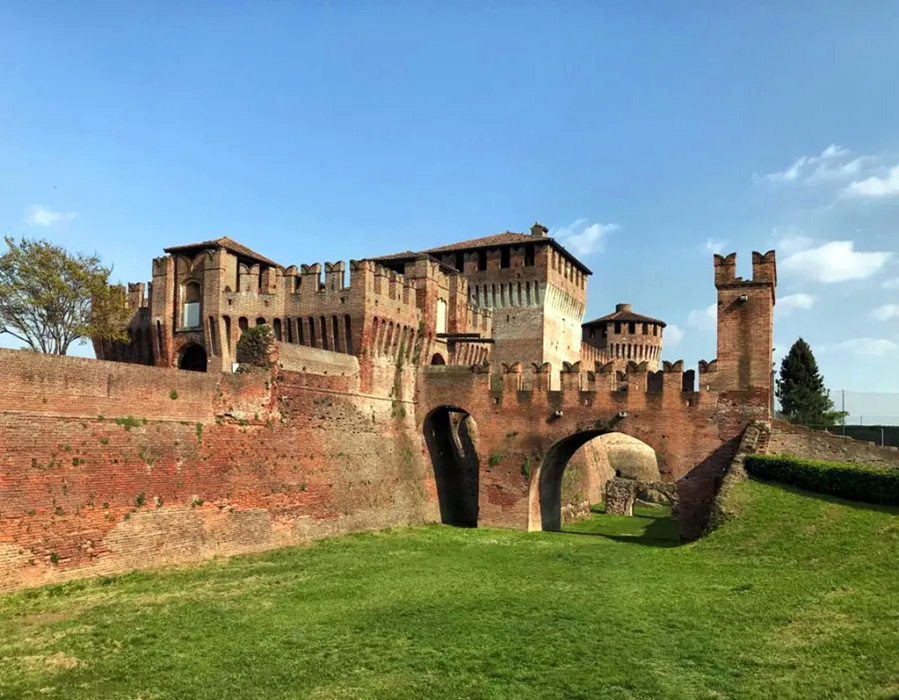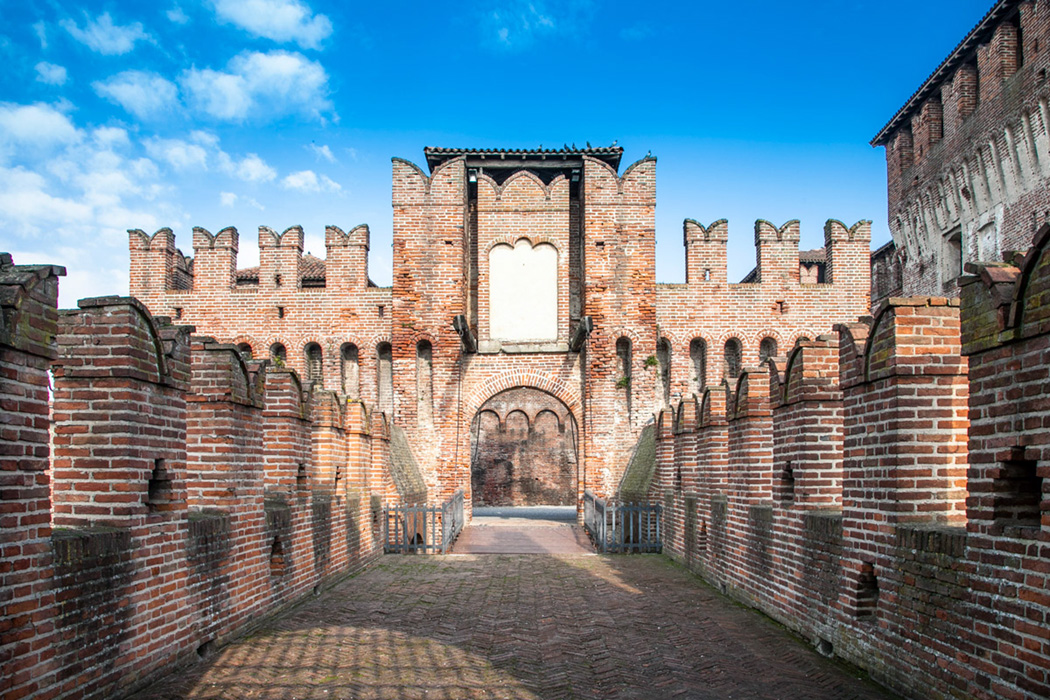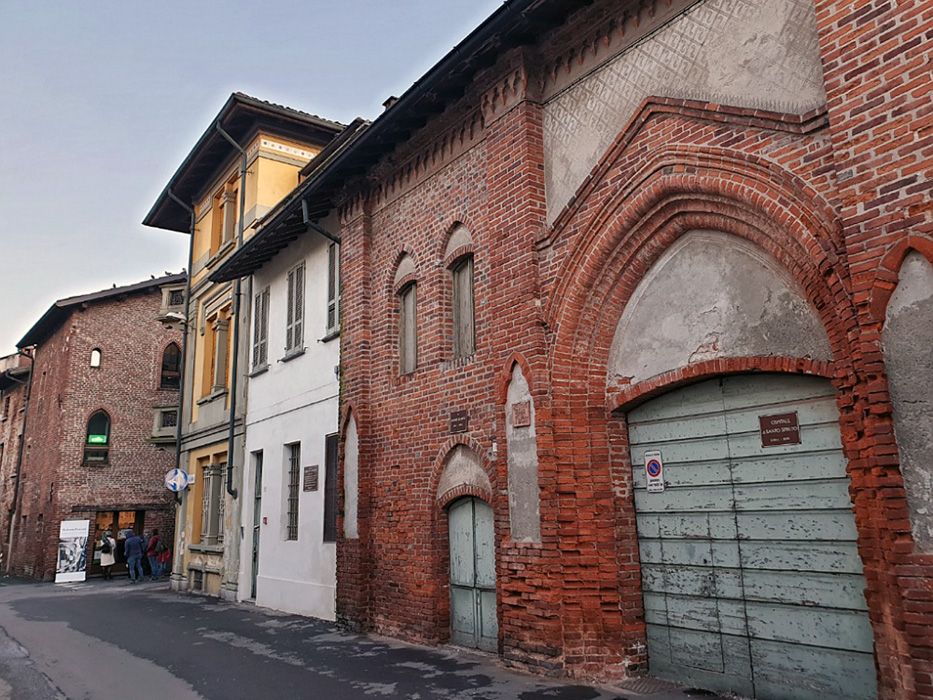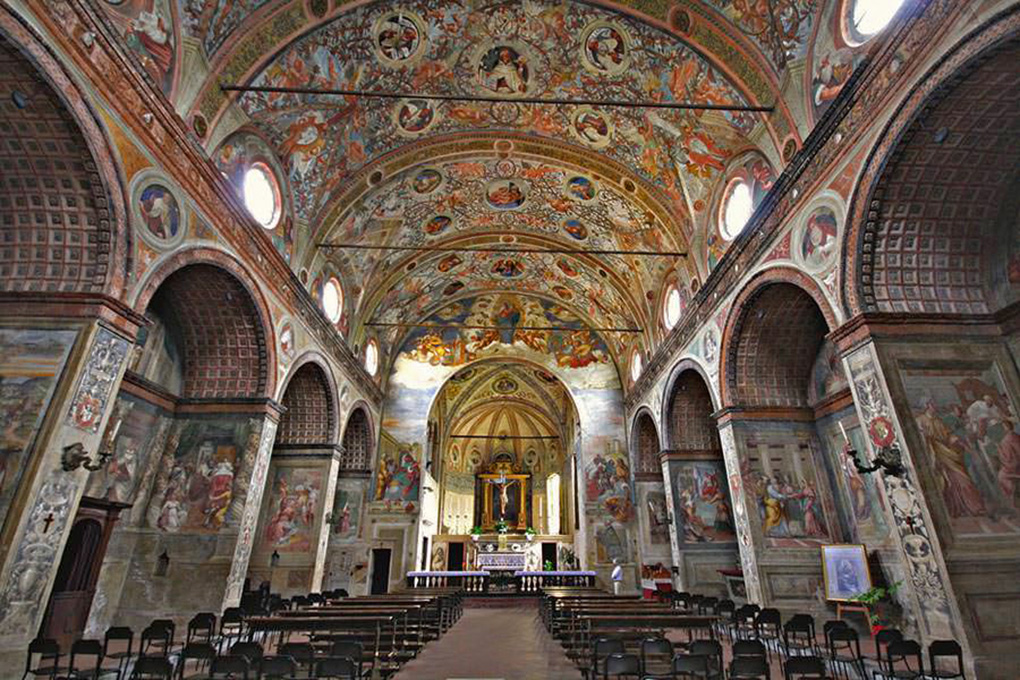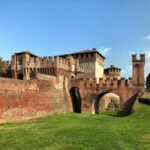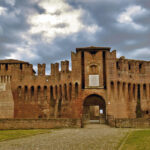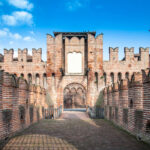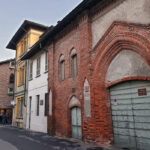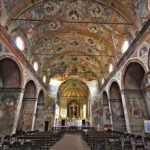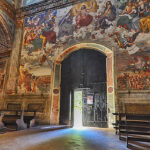Soncino
>>Bergamo Golf District
>>Lake Garda Golf District
Soncino is a peaceful and easily accessible village, rich in suggestive historical and artistic evidence, such as the impressive Sforza Castle, the interesting Printing Museum, churches, and historic buildings, which you can admire and discover.
Near the castle, there is the former Meroni textile mill, built in 1898 with eclectic features typical of late 19th-century architecture. Continuing on, we arrive at the Porta a Sera and enter the village via IV Novembre, the ancient Strada Magna (Contrada Grande), which constitutes its main axis. The urban fabric reveals its typical medieval structure with houses and buildings aligned along the road.
The Castle
It was the deterioration of the ancient southeastern castle, the first military construction to defend the village dating back to the 10th century, that prompted Duke Galeazzo Maria Sforza to build a new castle in the southwest. The circular tower in the southwest is the result of the adaptation of the pre-existing tower. The works for the preparation of the new fortress began in 1473, based on the design of Bartolomeo Gadio, and were completed by 1475.
With the enfeoffment of Count Massimiliano Stampa on November 3, 1536, the splendid military structure was progressively modified and transformed into a castle for residential purposes, with some valuable decorative painting interventions, and a chapel was created in the southeast tower. The fortress was handed over to the Municipality of Soncino on May 27, 1876, as a legacy of Massimiliano Cesare Stampa, the 14th and last Marquis of Soncino, in a state of deterioration.
In 1883, the Royal Ministry of Public Education commissioned architect Luca Beltrami to design its restoration and renovation. Beltrami’s intervention represents an example of reconstruction based on rigorous historical documentation.
The Printing Museum
The Jewish Printing Museum in Soncino was inaugurated in 1988, born from the will of the Pro loco Association, in conjunction with the celebrations organized to commemorate a memorable event, the 500th anniversary of the Printing of the First Complete Hebrew Bible, which took place in Soncino on April 22, 1488, by a family of Jews from Speyer, Germany.
Around 1490, the Jews who had taken the surname “Soncino” had to leave our village; the printing activity continued in Barco di Orzinuovi, Brescia, Cesena, Rimini, Fano, Pesaro, Naples, Salonika, and Constantinople.
They printed not only in Hebrew but also in Latin, Greek, Italian vernacular, and even Christian religious texts. They always signed their productions with the name of SONCINO, as a sign of gratitude towards the city that had welcomed them after their expulsion from Germany.
Gershom Soncino was the only Jewish typographer to print with his own means, practicing over the course of two centuries. He is considered the greatest Jewish typographer for the care and precision in the composition of texts and the typographic appearance of volumes.
The church Santa Maria delle Grazie
In 1468, the Carmelites were granted the use of a small church outside Porta San Giuseppe in Soncino. In February 1501, Cardinal Raimondo Perauti, Bishop of Gurk in Carinthia, laid the foundation stone for the new church, which was strongly desired by Father Pietro da Mortara. Father Antonio Maestri, who had previously come from the Carmelite convent in Mantua, was in charge of the construction work. Between 1515 and 1526, the bell tower was erected according to the design of Master Gerardo da Piacenza.
The church was consecrated on September 8, 1528 by Monsignor Luca da Seriate, in the presence of Francesco II Sforza, who had supported the expenses for the impressive cycle of frescoes. Santa Maria delle Grazie became a pantheon church for the noble and powerful local family of the Stampa. In 1536, Charles V invested Massimiliano Stampa with the marquisate of Soncino in this very church.
In 1772, after the edict of Maria Theresa of Austria, which suppressed the convents, the Carmelites had to leave Soncino and their church, which began an inexorable decline until 1864, when the holy Soncinese Paola Elisabetta Cerioli, founder of the Order of the Sisters of the Holy Family, purchased the convent and the church, restoring both to their former glory.
The building stands on a now-forgotten stretch of the ancient Roman commercial road, the ancient Calciana road that connected Bergamo to Cremona.
Access to the church is through a staircase composed of two ramps, and one is faced with the façade in brick, from which fragments of frescoes emerge. Once painted on it were the figures, now disappeared, of San Rocco and San Cristoforo. On the façade, divided into three parts by two pilasters, there is a Bramantesque-type portal built of white marble from Rezzato (Botticino marble) above which is visible, in addition to the rose window, a full-round statue of the Virgin with the Child.
The interior of the church is “one of the most elaborate decorative schemes of the entire Renaissance”; thus was defined in 1952 (when the church was unknown to most) by Bernard Berenson, an eminent art historian.
The building, with a rectangular plan and a single nave, has a barrel vault divided into five bays. On either side of the nave, there are shallow chapels – five to the right and five to the left. The vast cycle of frescoes covering the interior is the work of Francesco Scanzi, Giulio Campi, and Francesco and Bernardino Carminati.
The first, fourth, and fifth chapels on the left, and the chapels on the right are painted by Francesco Scanzi with various subjects, including Madonna and Child, Flight to Egypt, Annunciation, Apparition of Jesus to Mary Magdalene, and saints.
The presbytery has a ribbed groin vault, and in the four panels, the Evangelists are depicted, attributed to the painter from Cremona, Giulio Campi, who is also considered the author of the Assumption of Mary, painted on the arch above. The pontile railing that separates the presbytery from the apse originally separated the front church for the clergy from the rear church for the faithful. Criticism sees in all the Campi frescoes a turning point towards an ever more conscious involvement of the painter in the Mannerist adventure: vivid colors, elaborate draperies, the sought-after elaboration of composition, and the accentuated expressiveness.
The Last Judgment, painted on the counter-façade, is the work of Francesco and Bernardino Carminati.

